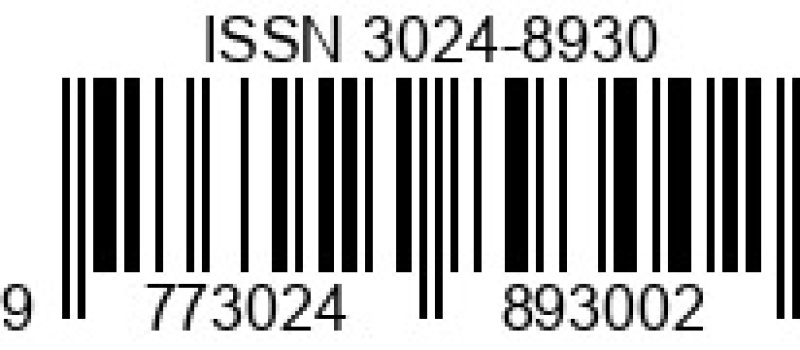Prevalensi Kecanduan Smartphone Pada Pelajar
Survei Kecanduan Smartpone pada Siswa di Sekolah Menengah dan Mahasiswa di Perguruan Tinggi Indonesia
DOI:
https://doi.org/10.30870/diversity.v3i1.83Keywords:
Smartphone addiction, kecanduan smartphone berdasarkan jenis kelamin, kecanduan smartphone berdasarkan jenjang pendidikanAbstract
Penelitian ini bertujuan untuk mengetahui bagaimana kecanduan smartphone pada pelajar. Pendekatan yang digunakan ialah pendekatan penelitian kuantitatif dengan metode survei dengan jumlah sampel 200 siswa SMP sederajat, 200 siswa SMA sederajat, dan 100 siswa perguruan tinggi berusia 12-24 tahun. Hasil penelitian menunjukkan adanya perbedaan kecanduan smartphone pada laki-laki dan perempuan. Meskipun tidak terlalu signifikan berdasarkan jenis kelamin, pelajar perempuan lebih kecanduan dibandingkan pelajar laki-laki. Pelajar berusia 24 tahun memiliki kecanduan yang lebih tinggi dibandingkan pelajar pada kelompok usia 12-23 tahun. Ada peningkatan durasi penggunaan smartphone oleh pelajar. Mahasiswa cenderung lebih jarang mengecek smartphone mereka tanpa pemberitahuan atau notifikasi dibandingkan siswa SMP/Sederajat dan SMA/Sederajat.References
Abu-Jedy, A. (2008). Mobile phone addiction and its relationship with self-discloser among sample of students from University Of Jordan And Amman Al-Ahliyya University. Jordan Journal of Educational Science, 4(2), 137–150.
Al-Barashdi, H., Bouazza, A., & Jabur, N. (2015). Smartphone Addiction among University Undergraduates: A Literature Review. Journal of Scientific Research and Reports, 4(3), 210–225. https://doi.org/10.9734/JSRR/2015/12245
Arthy, C. C., Effendy, E., Amin, M. M., Loebis, B., Camellia, V., & Husada, M. S. (2019). Indonesian Version of Addiction Rating Scale of Smartphone Usage Adapted from Smartphone Addiction Scale-Short Version (SAS-SV) In Junior High School. Open Access Macedonian Journal of Medical Sciences, 7(19), 3235–3239. https://doi.org/10.3889/oamjms.2019.691
Asare Vitenu-Sackey, P., & Barfi, R. (2021). The Impact of Covid-19 Pandemic on the Global Economy: Emphasis on Poverty Alleviation and Economic Growth. The Economics and Finance Letters, 8(1), 32–43. https://doi.org/10.18488/journal.29.2021.81.32.43
Aulyah, I., & Isrofin, B. (2020). Hubungan Harga Diri dan Fear of Missing Out dengan Smartphone Addiction Mahasiswa Universitas Negeri Semarang. 2(2), 132–142.
Billieux, J., Van der Linden, M., & Rochat, L. (2008). The role of impulsivity in actual and problematic use of the mobile phone. Applied Cognitive Psychology: The Official Journal of the Society for Applied Research in Memory and Cognition, 22(9), 1195–1210.
Cha, S.-S., & Seo, B.-K. (2018). Smartphone use and smartphone addiction in middle school students in Korea: Prevalence, social networking service, and game use. Health Psychology Open, 5(1), 205510291875504. https://doi.org/10.1177/2055102918755046
Chen, B., Liu, F., Ding, S., Ying, X., Wang, L., & Wen, Y. (2017). Gender differences in factors associated with smartphone addiction: a cross-sectional study among medical college students. BMC Psychiatry, 17(1), 341. https://doi.org/10.1186/s12888-017-1503-z
Chóliz, M. (2012). Mobile-phone addiction in adolescence: the test of mobile phone dependence (TMD). Progress in Health Sciences, 2(1), 33–44.
Chung, N. (2011). Korean adolescent girls’ addictive use of mobile phones to maintain interpersonal solidarity. Social Behavior and Personality: An International Journal, 39(10), 1349–1358.
Cocoradă, E., Maican, C. I., Cazan, A.-M., & Maican, M. A. (2018). Assessing the smartphone addiction risk and its associations with personality traits among adolescents. Children and Youth Services Review, 93, 345–354.
Cojocariu, V.-M., Lazar, I., Nedeff, V., & Lazar, G. (2014). SWOT Anlysis of E-learning Educational Services from the Perspective of their Beneficiaries. Procedia - Social and Behavioral Sciences, 116, 1999–2003. https://doi.org/10.1016/j.sbspro.2014.01.510
Coskun, S., & Muslu, G. K. (2019). Investigation of problematic mobile phones use and fear of missing out (FoMO) level in adolescents. Community Mental Health Journal, 55(6), 1004–1014.
Csibi, S., Griffiths, M. D., Demetrovics, Z., & Szabo, A. (2021). Analysis of Problematic Smartphone Use Across Different Age Groups within the ‘Components Model of Addiction.’ International Journal of Mental Health and Addiction, 19(3), 616–631. https://doi.org/10.1007/s11469-019-00095-0
de Freitas, B. H. B. M., Gaíva, M. A. M., Bernardino, F. B. S., & Diogo, P. M. J. (2021). Smartphone Addiction in Adolescents, part 2: Scoping Review—Prevalence and Associated Factors. Trends in Psychology, 29(1), 12–30. https://doi.org/10.1007/s43076-020-00040-4
De, S. (2020). IMPACTS OF THE COVID-19 PANDEMIC ON GLOBAL EDUCATION. In COVID-19 Pandemic update 2020 (pp. 84–94). Royal Book Publishing. https://doi.org/10.26524/royal.37.6
Devís-Devís, J., Peiró-Velert, C., Beltrán-Carrillo, V. J., & Tomás, J. M. (2009). Screen media time usage of 12–16 year-old Spanish school adolescents: effects of personal and socioeconomic factors, season and type of day. Journal of Adolescence, 32(2), 213–231.
Dhawan, S. (2020). Online Learning: A Panacea in the Time of COVID-19 Crisis. Journal of Educational Technology Systems, 49(1), 5–22. https://doi.org/10.1177/0047239520934018
Divan, H. A., Kheifets, L., Obel, C., & Olsen, J. (2012). Cell phone use and behavioural problems in young children. Journal of Epidemiology and Community Health, 66(6), 524 LP – 529. https://doi.org/10.1136/jech.2010.115402
Elhai, J. D., Levine, J. C., Dvorak, R. D., & Hall, B. J. (2017). Non-social features of smartphone use are most related to depression, anxiety and problematic smartphone use. Computers in Human Behavior, 69, 75–82. https://doi.org/10.1016/j.chb.2016.12.023
Fauziyyah, S. (2017). Gambaran kecanduan ponsel pintar (smartphone) pada remaja generasi Z : studi survey di SMP Labschool Kebayoran. Uniersitas Negeri Jakarta.
FİDANCI, İ., AKSOY, H., YENGİL TACİ, D., AYHAN BAŞER, D., & CANKURTARAN, M. (2021). Effect of COVID-19 Restrictions on Nomophobia and Smartphone Addiction Levels. Bağımlılık Dergisi, 22(4), 395–402. https://doi.org/10.51982/bagimli.911501
George, G., Lakhani, K. R., & Puranam, P. (2020). What has changed? The Impact of Covid Pandemic on the Technology and Innovation Management Research Agenda. Journal of Management Studies, 57(8), 1754–1758. https://doi.org/10.1111/joms.12634
Grant, J. E., Potenza, M. N., Weinstein, A., & Gorelick, D. A. (2010). Introduction to behavioral addictions. The American Journal of Drug and Alcohol Abuse, 36(5), 233–241.
Hakoama, M., & Hakoyama, S. (2011). The impact of cell phone use on social networking and development among college students. The American Association of Behavioral and Social Sciences Journal, 15(1), 20.
Haug, S., Paz Castro, R., Kwon, M., Filler, A., Kowatsch, T., & Schaub, M. P. (2015). Smartphone use and smartphone addiction among young people in Switzerland. Journal of Behavioral Addictions, 4(4), 299–307. https://doi.org/10.1556/2006.4.2015.037
Hong, F.-Y., Chiu, S.-I., & Huang, D.-H. (2012). A model of the relationship between psychological characteristics, mobile phone addiction and use of mobile phones by Taiwanese university female students. Computers in Human Behavior, 28(6), 2152–2159.
Jahng, K. E. (2019). Maternal abusive parenting and young South Korean adolescents’ problematic smartphone use: The moderating effects of time spent hanging out with peers and trusting peer relationships. Children and Youth Services Review, 98, 96–104.
James, D., & Drennan, J. (2005). Exploring addictive consumption of mobile phone technology. Australian and New Zealand Marketing Academy Conference, Perth, Australia.
Kamaruddin, P. S. N. M., & Nawi, A. M. (2020). Smartphone usage and pattern on self-reported symptoms among medical students in Universiti Kebangsaan Malaysia during the COVID-19 lockdown.
Kayis, A. R., Satici, B., Deniz, M. E., Satici, S. A., & Griffiths, M. D. (2021). Fear of COVID-19, loneliness, smartphone addiction, and mental wellbeing among the Turkish general population: a serial mediation model. Behaviour & Information Technology, 1–13. https://doi.org/10.1080/0144929X.2021.1933181
Király, O., Potenza, M. N., Stein, D. J., King, D. L., Hodgins, D. C., Saunders, J. B., Griffiths, M. D., Gjoneska, B., Billieux, J., Brand, M., Abbott, M. W., Chamberlain, S. R., Corazza, O., Burkauskas, J., Sales, C. M. D., Montag, C., Lochner, C., Grünblatt, E., Wegmann, E., … Demetrovics, Z. (2020). Preventing problematic internet use during the COVID-19 pandemic: Consensus guidance. Comprehensive Psychiatry, 100, 152180. https://doi.org/10.1016/j.comppsych.2020.152180
Kubey, R. W., Lavin, M. J., & Barrows, J. R. (2001). Internet use and collegiate academic performance decrements: Early findings. Journal of Communication, 51(2), 366–382.
Kuss, D., & Griffiths, M. (2017). Social Networking Sites and Addiction: Ten Lessons Learned. International Journal of Environmental Research and Public Health, 14(3), 311. https://doi.org/10.3390/ijerph14030311
Kwon, M., Kim, D. J., Cho, H., & Yang, S. (2013). The smartphone addiction scale: Development and validation of a short version for adolescents. PLoS ONE, 8(12), 1–7. https://doi.org/10.1371/journal.pone.0083558
Lee, S.-Y., Lee, D., Nam, C. R., Kim, D. Y., Park, S., Kwon, J.-G., Kweon, Y.-S., Lee, Y., Kim, D. J., & Choi, J.-S. (2018). Distinct patterns of Internet and smartphone-related problems among adolescents by gender: Latent class analysis. Journal of Behavioral Addictions, 7(2), 454–465.
Lin, Y.-H., Chang, L.-R., Lee, Y.-H., Tseng, H.-W., Kuo, T. B. J., & Chen, S.-H. (2014). Development and validation of the Smartphone Addiction Inventory (SPAI). PloS One, 9(6), e98312.
Mahyoob, M. (2020). Challenges of e-Learning during the COVID-19 Pandemic Experienced by EFL Learners. Arab World English Journal, 11(4), 351–362. https://doi.org/10.24093/awej/vol11no4.23
Meirianto, M. T. (2018). Hubungan Kecanduan Smartphone dengan Kualitas Tidur Pada Remaja. Universitas Islam Indonesia.
Mulyati, T., & Nrh, F. (2019). Kecanduan Smartphone Ditinjau Dari Kontrol Diri Dan Jenis Kelamin Pada Siswa Sma Mardisiswa Semarang. Jurnal Empati, 7(4), 152–161.
Nashruddin, N., Alam, F. A., & Tanasy, N. (2020). Perceptions of Teacher and Students on the Use of E-Mail as A Medium in Distance Learning. Berumpun: International Journal of Social, Politics, and Humanities, 3(2), 182–194.
Nisa, H., Permana, A., & Firmansyah, R. (2020). Peranan Smarthphone Dalam Dunia Pendidikan Di Masa Pandemi Covid-19. TEMATIK-Jurnal Teknologi Informasi Dan Komunikasi, 7(2), 140–146.
Nissa, C. (2019). Studi Komparasi Nomophobia Berdasarkan Jenis Kelamin pada Mahasiswa. 24, 141–148. https://doi.org/10.20885/psikologi.vol24.iss2.art4
Nunes, P. P. de B., Abdon, A. P. V., Brito, C. B. de, Silva, F. V. M., Santos, I. C. A., Martins, D. de Q., Meira, P. M. F., & Frota, M. A. (2021). Factors related to smartphone addiction in adolescents from a region in Northeastern Brazil. Ciência & Saúde Coletiva, 26, 2749–2758.
Nurwulan, N. R. (2021). SEKOLAH DARING DAN KETERGANTUNGAN TELEPON GENGGAM PADA REMAJA. ETNOREFLIKA: Jurnal Sosial Dan Budaya, 10(2), 198–211. https://doi.org/10.33772/etnoreflika.v10i2.1115
Perry, S. D., & Lee, K. C. (2007). Mobile phone text messaging overuse among developing world university students. Communicatio, 33(2), 63–79.
Potas, N., Açıkalın, Ş. N., Erçetin, Ş. Ş., Koçtürk, N., Neyişci, N., Çevik, M. S., & Görgülü, D. (2021). Technology addiction of adolescents in the COVID-19 era: Mediating effect of attitude on awareness and behavior. Current Psychology. https://doi.org/10.1007/s12144-021-01470-8
Saadeh, H., Al Fayez, R. Q., Al Refaei, A., Shewaikani, N., Khawaldah, H., Abu-Shanab, S., & Al-Hussaini, M. (2021). Smartphone Use Among University Students During COVID-19 Quarantine: An Ethical Trigger. Frontiers in Public Health, 9. https://doi.org/10.3389/fpubh.2021.600134
Saha, J., Barman, B., & Chouhan, P. (2020). Lockdown for COVID-19 and its impact on community mobility in India: An analysis of the COVID-19 Community Mobility Reports, 2020. Children and Youth Services Review, 116, 105160. https://doi.org/10.1016/j.childyouth.2020.105160
Serra, G., Lo Scalzo, L., Giuffrè, M., Ferrara, P., & Corsello, G. (2021). Smartphone use and addiction during the coronavirus disease 2019 (COVID-19) pandemic: cohort study on 184 Italian children and adolescents. Italian Journal of Pediatrics, 47(1), 150. https://doi.org/10.1186/s13052-021-01102-8
Singh, V., & Thurman, A. (2019). How Many Ways Can We Define Online Learning? A Systematic Literature Review of Definitions of Online Learning (1988-2018). American Journal of Distance Education, 33(4), 289–306. https://doi.org/10.1080/08923647.2019.1663082
Sohn, S. Y., Rees, P., Wildridge, B., Kalk, N. J., & Carter, B. (2019). Prevalence of problematic smartphone usage and associated mental health outcomes amongst children and young people: a systematic review, meta-analysis and GRADE of the evidence. BMC Psychiatry, 19(1), 356. https://doi.org/10.1186/s12888-019-2350-x
Srivastava, L. (2005). Mobile phones and the evolution of social behaviour. Behaviour & Information Technology, 24(2), 111–129.
Takao, M., Takahashi, S., & Kitamura, M. (2009). Addictive personality and problematic mobile phone use. CyberPsychology & Behavior, 12(5), 501–507.
UNESCO. (2020). Education in a post covid world : Nine ideas for public action international commission on the futures of education.
Van Deursen, A. J. A. M., Bolle, C. L., Hegner, S. M., & Kommers, P. A. M. (2015). Modeling habitual and addictive smartphone behavior: The role of smartphone usage types, emotional intelligence, social stress, self-regulation, age, and gender. Computers in Human Behavior, 45, 411–420.
Wahab, S., & Iskandar, M. (2020). Teacher’s Performance to Maintain Students’ Learning Enthusiasm in the Online Learning Condition. JELITA, 1(2), 34–44.
Yildiz, M. (2017). Emotion regulation strategies as predictors of internet addiction and smartphone addiction in adolescents. Journal of Educational Sciences and Psychology, 7(1), 66–78.
Zhang, M. X., Chen, J. H., Tong, K. K., Yu, E. W., & Wu, A. M. S. (2021). Problematic Smartphone Use during the COVID-19 Pandemic: Its Association with Pandemic-Related and Generalized Beliefs. International Journal of Environmental Research and Public Health, 18(11), 5724. https://doi.org/10.3390/ijerph18115724




